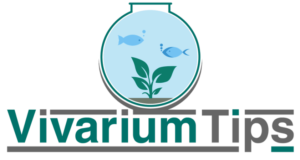If you know what springtails are, you might probably hate the sound of these creatures for simply being near you. I mean – why would anyone be using springtails as mold control?
These creatures are pretty much useless to even exist, right?
Not necessarily. With the existence of springtails, they play a huge role in the ecosystem that you’re probably not even aware of it. The circle of life and ecosystems are all because of springtails being a great addition to the environment.
Let’s rewind a little, so you’ll get an idea of how these creatures can be used as mold control!
Disclaimer: This guide may contain affiliate links, which means that I’ll earn a commission when you purchase from it. This won’t cost you anything. By purchasing from these affiliate links, the commission will help keep this blog running with free information.
Do springtails eat mold?
Since you’re here – you’re probably wondering if springtails consume mold since the title of this article kind of spoils it.
Here’s what you should know:
When it comes to springtails consuming food, they will not consume the food directly especially with the food you are feeding. Instead, the springtails will consume the mold that grows on the food.
So yes, springtails love to feast on mold.
How to use springtails as mold control?
Whether you have a terrarium or a paludarium, you can expect that over time – mold will slowly grow.
So what’s the best way to utilize these creatures, you ask?
Step 1. First off, you need to collect springtails! You can find springtails in the wild with this guide or you can purchase them here online.
Step 2. You can introduce them to your moldy ecosystems (terrarium, paludarium, etc.)
Step 3. Over time, your springtails will consume them all.
What happens if the springtail population grows?
Nothing will happen to your ecosystem. As the springtail population grows over time and there isn’t any food left – the population will die out. This will keep a balance to your ecosystem without the worries of having a flood of springtails overtaking your build.
What do springtails eat other than mold?
Aside from being known for eating mold, springtails also eat other things that can help improve the environment. They love being in moisty conditions or areas that are damp.
So, what else do springtails consume?
You probably didn’t expect this but springtails are usually found in soil, dead plants, leaves, and wood that are rotting. The reason you find them around these types of environments is that they consume algae, dead stuff, pollen, and even fungi.
Can you find springtails in aquariums?
There’s a probable chance that you could encounter springtails in an aquarium. When springtails make contact with water, they will usually stay on the surface of the water.
Springtails can survive in water for a lengthy time. The survivability depends on whether they will be eaten by fish or other bigger creatures.
From VivariumTips,
If you didn’t know of a solution when encountering a mold problem, then I hope that this article helped you. Springtails are fantastic creatures when it comes to mold problems in your ecosystem. If you missed it, here’s a guide on how to catch springtails in the wild:
If you’re not sure if you want to go find them in the wild, you could always order a bunch of them online by clicking here.
If you enjoyed this article, don’t hesitate to comment on your feedback. I’m also glad to answer any of your questions if you have any. You can support VivariumTips by sharing any articles on this blog with your friends/family! 🙂
